ALWAYS EARNING
We give you 10% back in rewards for every dollar spent on classes!
ALWAYS SAVING
Once you have $5 in reward points, you can apply them as a discount on future orders.
GOT IT, THANKS!
Questions? Contact us!

Sometimes a career is something you’ve dreamed of for years—and sometimes you wake up one day knowing it’s for you. We sat down with Jeanette Caines, director of jewelry art at Jewelry Arts Inc., to learn more about the evolution of jewelry design, how spontaneity can be a gift, and the wisdom of wearing bright red jumpsuits to your first day of class.
The night I dreamed of becoming a jeweler was the best night of my life. I had no idea at the time that this career would make me so happy. I just knew that I had to do it.
Teaching, making jewelry, and now running the school is like a new challenge every day. It’s never boring. I get to be creative pretty much every minute of the day, and help others be creative, too.
The amazing glow a student gets when they finish their first project and every project after that—I get to be a part of it. It’s really an ideal situation for me. On top of it all, I have an incredibly talented group of coworkers to play with all day. I may not be rich, but I’ve definitely won the lottery.
Fashions come and go, but the most important thing is the taste of each individual student. Some love minimalism, some love lots of detail.
My job is to help coax out the design already within each student. We still use silver and gold, as people have been doing for millenia. They’re the perfect canvas for creativity.
I woke up one morning and knew that I wanted to be a jeweler, so I looked through all the phone books to find jewelry schools. To the rube I was, Institute sounded like a large brick building with a respectably large campus. I called JAI and asked to be connected to the financial aid department. Lucky me, I got Myron Bikakis on the phone who snickered and said “What do you think this is, Princeton?” I signed up for classes anyway and couldn’t wait to start.
Oh. God. I was so excited about starting my new classes that I went out and bought a special new outfit. Keep in mind that it was the early 90s: It was a bright red jumpsuit with a huge zipper down the front. Basically a onesie for adults. I thought I would look very cool, and blend right in with the hip city types. Needless to say, I was the only one wearing a onesie.
After my two years of apprenticing, I was an instructor for many years. When I saw that our former owner/director was getting ready to retire and probably close the school, I felt moved to do something about it.
I looked for an investor to buy the school, and part of the deal was that I would run it. I believe I had zero of the necessary skills to run the school, but felt I had no choice but to learn fast. I love Jewelry Arts, and had to keep it running as others had done for me.
At the time, I was essentially a luddite, and one of my first goals was to move us at least into the 20th century. That meant a complete website renovation, accepting credit cards, and more. We also needed great images to promote what we do.
Getting professional photos done was—and is—very expensive. Few jewelers had photos taken of their pieces, and you couldn’t take any photos on your phone back then that were any good (just seven years ago!) I quickly realized that if I wasn’t taking the pictures, I wasn’t going to have anything to show off on our website. It was a process, but all the pictures on the website are now mine, as are most of our social media shots.
Learning Photoshop was the biggest hurdle, and I’m still working to improve my skills. I managed to learn how to use Wordpress, and I design and run the website along with our online shopping platform. I also took Coursera classes in accounting and marketing to learn the basics. There’s nothing like getting thrown in the deep end to sharpen your wits!
My usual method for learning anything is to read everything I can get my hands on and then practice, practice, practice. Nothing is instant: You just have to keep chipping away at it.
It was necessary to expand our curriculum and carefully examine how we taught everything to make sure we were teaching the best and easiest methods. It isn’t acceptable to me for a teacher to say “I teach it this way because that’s how I was taught.”
As an instructor, you know that there are many different ways to make and teach jewelry. How you choose to teach must be based on what you think is best based on all of the methods you’ve seen. Naturally people may disagree, but the decision must be based on facts, testing, and observation. We want to be sure we’re using the best, easiest methods.
Personally, I’ll spend any amount of time to get the effect that I want, but I refuse to spend one extra second on technique if there’s a better way to get the same result. My own research into issues like these led me to write my book Soldering Demystified. Soldering is a cornerstone technique in jewelry-making, and I find information out there rather poor, confusing, and not properly tested.
If you can’t explain the “why” of a process, you have no business passing along information to others.

We specialize in teaching students one-on-one at their own pace. I try to teach my students to aim for beautiful, not perfect. Students can be so quick to tear down their work because of some perceived flaw or mistake—but in my opinion, creating something out of nothing is incredible, and something to be proud of. Period.
The goal is to try your best, appreciate the piece for all that you’ve accomplished, and then move on to the next creation. Trying to make everything perfect is the perfect way to make yourself miserable.
Ha! Just a time? No angels sang when I started making jewelry. My instructors didn’t swoon when they looked at my efforts.
After my first year as a student, I set up a bench at home to practice. After my first year of having a studio at home, I had about 40 ounces of scrap silver to sell to the refiner. What that means to all you not-yet-jewelers is that I accidentally melted and/or messed up dozens and dozens and dozens of pieces. My best-known technique was starting on a pair of earrings and ending up with a pendant because I melted one of the pair.
I needed to learn for myself what I could get away with, and I feel a big portion of my skills today are due to being willing to live a bit dangerously with my work. You never really learn where the line is unless you’re willing to cross it. Not everyone needs to work that way, but apparently I did.
On the bright side, I’m able to transmit those learnings to my students without them having to live dangerously, too.
My favorite piece to date is a pair of 22 karat gold bird earrings. I was fortunate enough to be included in the filming of a PBS “Nova” special in a segment on gold airing in November, and I made a one-of-a-kind piece for the filming to show the handmade techniques we use, some of them tracing all the way back to 2400 BCE. Gold is a really superior medium for metalworking. I made them a bit over the top, which suits my aesthetic of “too much is never enough.”

Jewelry Arts Inc. was founded by people fascinating with ancient jewelry making techniques. When people think ancient, they tend to think primitive—but at least as far as jewelry design is concerned, nothing could be farther from the truth.
These advanced handmade techniques were all but lost to most jewelers, since the few who had the knowledge would not share their information. The school’s founders, Robert Kulicke and Jean Stark, researched, experimented, and taught each rediscovery from granulation to Byzantine enameling and chain weaving. We still do a good bit of experimenting today, both to find better methods and to explore other ancient techniques.
Just think about the beautiful golden masterpieces at the Met. Who wouldn’t want all of those techniques, along with modern innovations, at their disposal when creating? I want it all, and I want it for our students.
This led to a worldwide expansion in the knowledge base of jewelers, and that legacy is something I’m very proud to be a part of.
Have we sufficiently inspired you to drape yourself in handmade bling? Browse and book a jewelry design class with Jeanette at Jewelry Arts Inc.



Discover


ALWAYS EARNING
We give you 10% back in rewards for every dollar spent on classes!
ALWAYS SAVING
Once you have $5 in reward points, you can apply them as a discount on future orders.
Questions? Contact us!




Get special date and rate options for your group. Submit the form below and we'll get back to you within 2 business hours with pricing and availability.